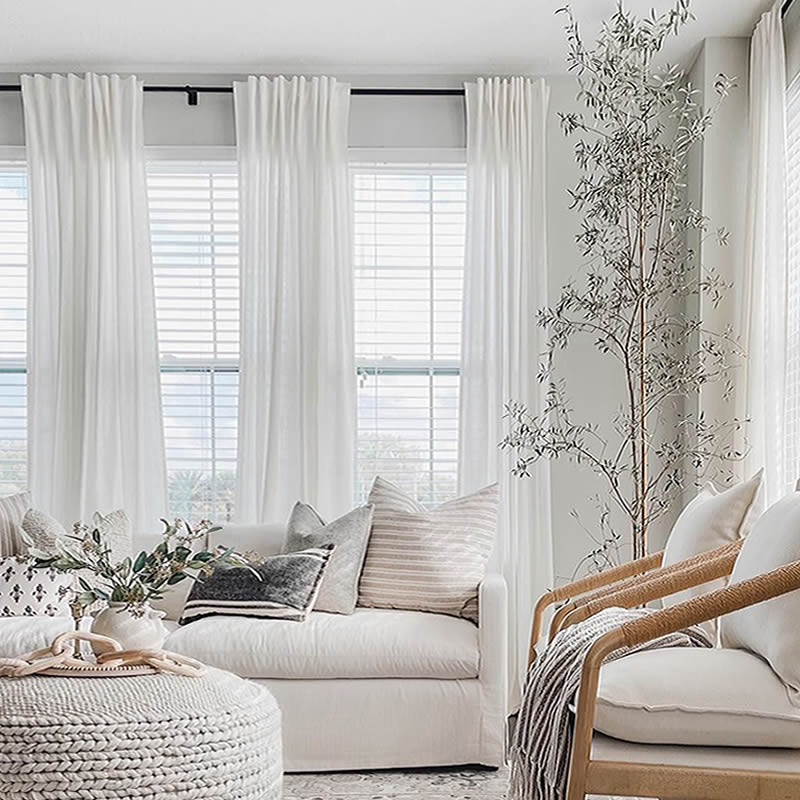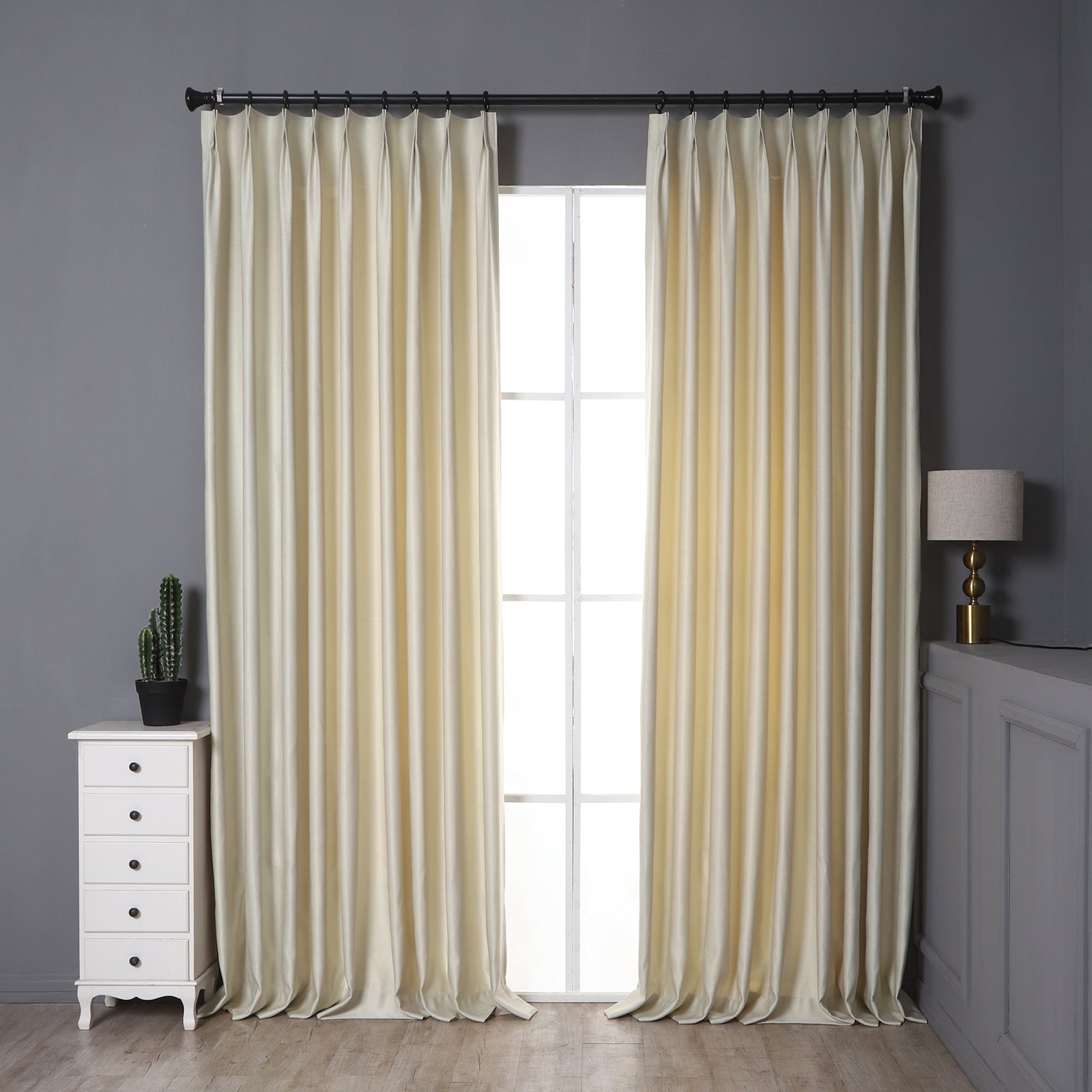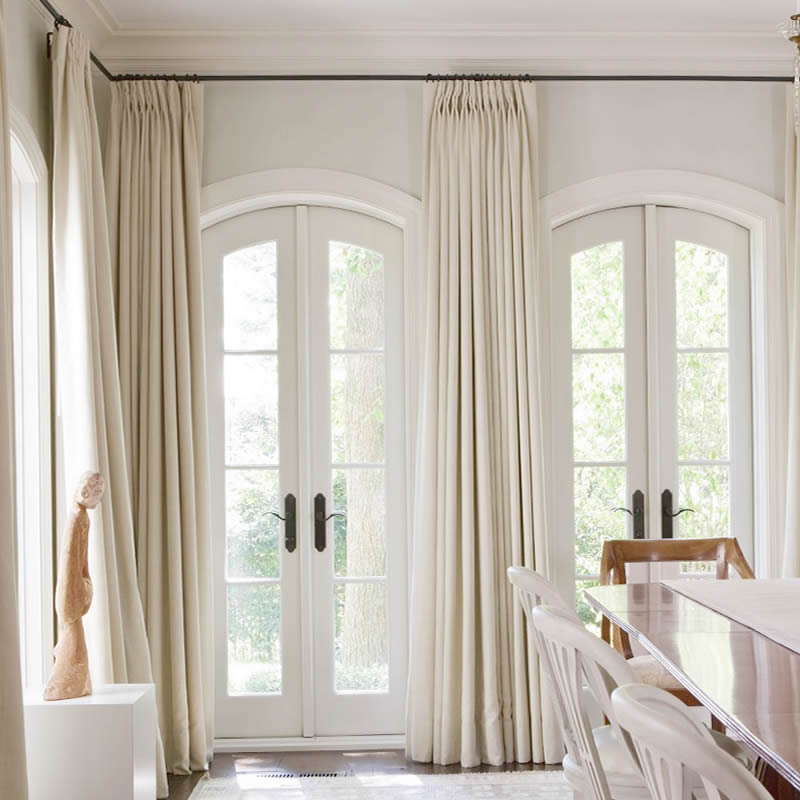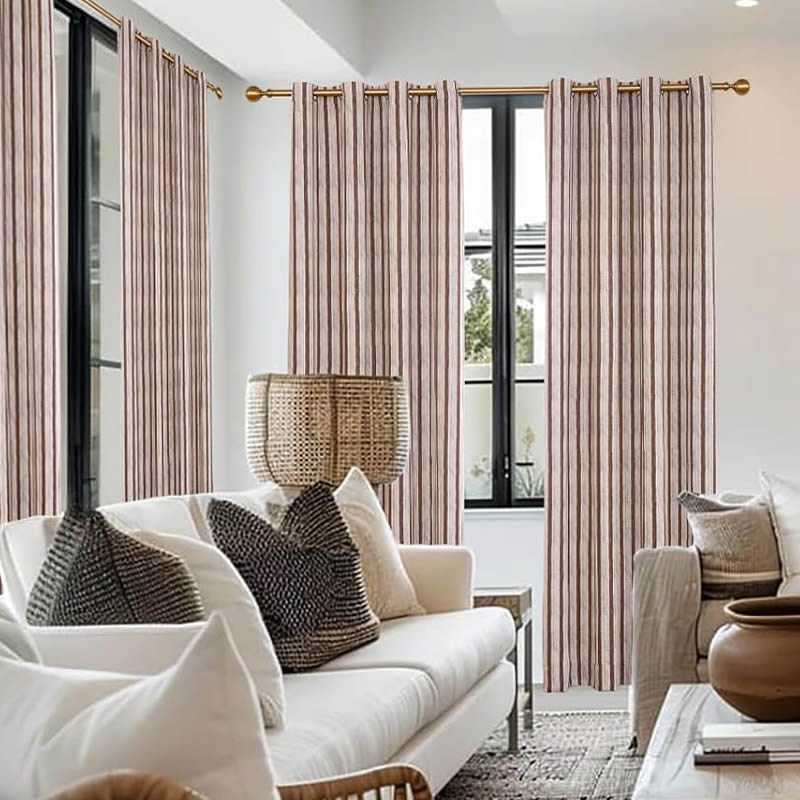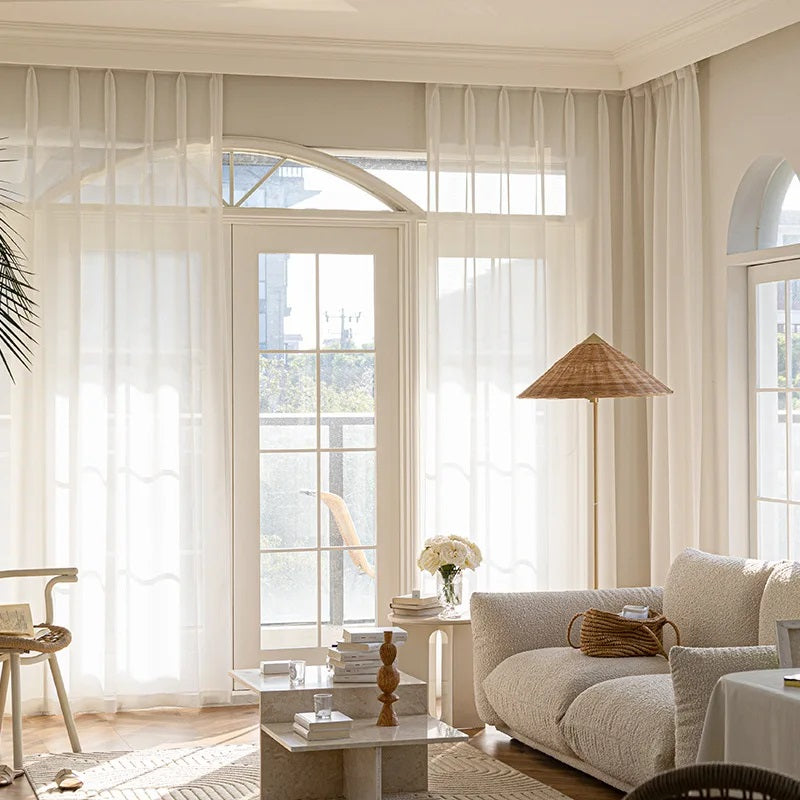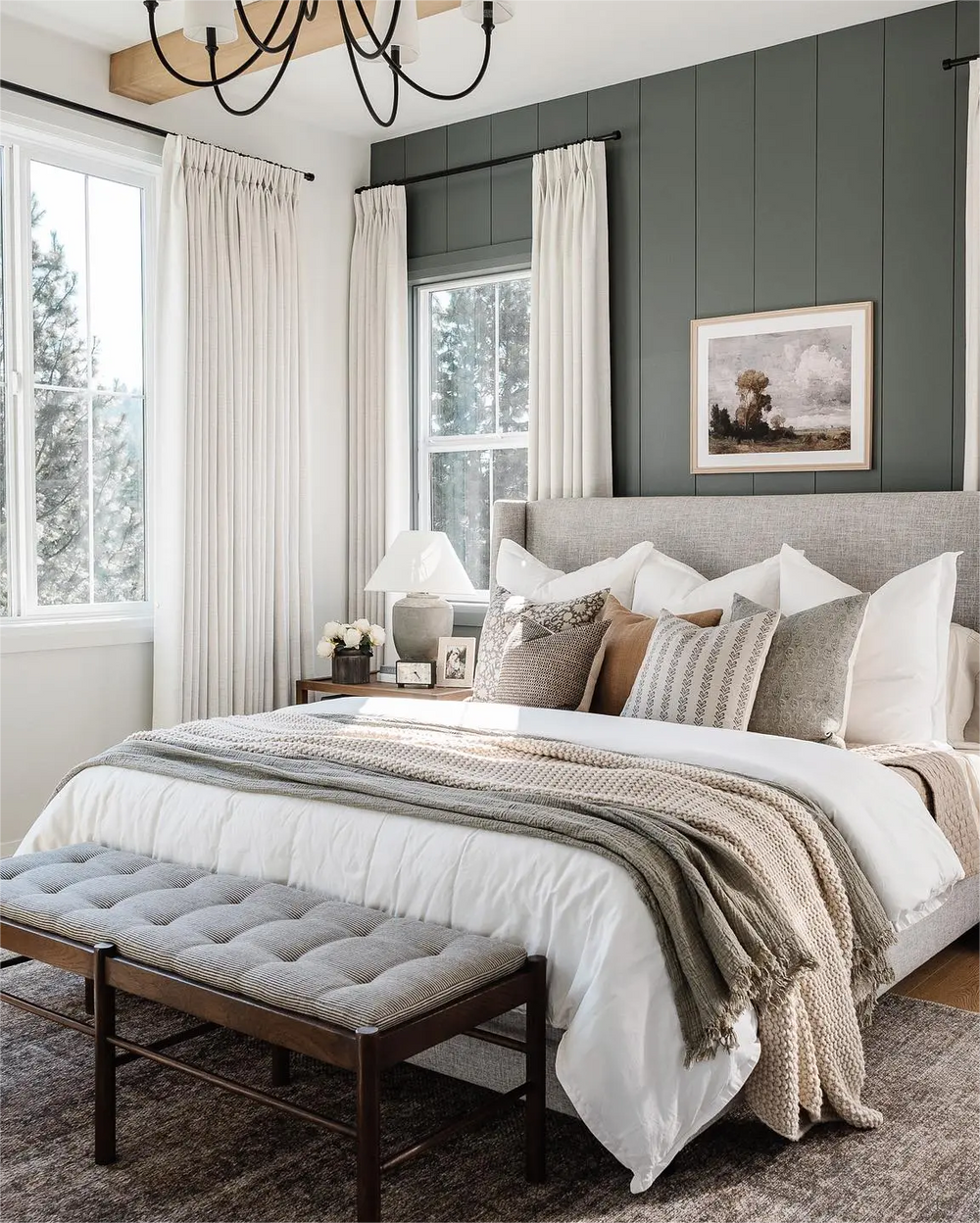curtains ·
Decorate with Curtains

Curtains are often an afterthought in home decor, but these humble window treatments hold the power to elevate a room from “meh” to “magical.” They frame your view, control light, and infuse personality—all while tying together furniture, colors, and textures. Whether you’re aiming for cozy, chic, or bold, here’s how to use curtains to transform your space like a pro.
Start with Style: Match Curtains to Your Aesthetic
Curtains should speak the same design language as the rest of your room. Here’s how to align them with your vibe:
- Modern Minimalist: Opt for clean lines and neutral tones (ivory, gray, soft beige). Linen or cotton curtains in solid colors work best, hung high and wide to create a streamlined look. Skip fussy details—simple rod pockets or hidden tabs keep things sleek.
- Bohemian: Embrace patterns and texture. Think macramé curtains, tasseled edges, or vibrant prints (florals, geometric shapes). Layer sheer, lightweight fabrics (like cotton voile) over thicker linen for a relaxed, lived-in feel.
- Vintage/Traditional: Go for richness with velvet or damask fabrics in deep hues (burgundy, forest green). Add elegance with pleated headers or tiebacks in complementary colors. Floor-length curtains that pool slightly on the ground enhance the old-world charm.
- Coastal: Lighten things up with breezy materials like linen or cotton in whites, blues, or soft pastels. Sheer curtains that let in plenty of natural light mimic the airy feel of beach houses. For a playful touch, try striped patterns or subtle nautical motifs.
Play with Fabric: Light, Texture, and Function
The fabric you choose dictates both style and functionality. Ask yourself: Do you need privacy? Want to filter light? Crave texture?
- Sheer/Lightweight: Perfect for bright, airy spaces (like sunrooms or kitchens). They soften harsh sunlight and add a dreamy, ethereal quality without blocking views entirely. Pair with heavier curtains for versatility—close the sheers for privacy, layer with solids for darkness.
- Linen/Cotton: A timeless choice for most rooms. Linen has a natural, slightly wrinkled texture that adds warmth, while cotton is crisp and easy to clean. Both work well in living rooms and bedrooms, balancing light control and breathability.
- Velvet/Velour: Luxurious and insulating, these fabrics add depth and drama. They’re ideal for bedrooms or formal dining rooms, where you want to create a cozy, opulent atmosphere. Note: Velvet can fade in direct sunlight, so pair with liners if your windows get harsh rays.
- Blackout: A must for bedrooms or home theaters. Look for blackout curtains with a stylish face fabric (no more boring beige!)—many come in linen blends or textured weaves that hide their functional side.
Length & Hang: The Secret to Making Rooms Look Larger
One of the biggest curtain mistakes? Hanging them too low or too short. Here’s how to get the proportions right:
- Hang High: Mount curtain rods 4–6 inches above the window frame (or even near the ceiling). This draws the eye upward, making ceilings feel taller and rooms more spacious.
- Go Wide: Extend rods 8–12 inches beyond the window width on both sides. When curtains are open, they’ll stack neatly without blocking light, and when closed, they’ll cover the window completely for a polished look.
- Length Matters:
- Floor-length: The gold standard for most rooms. Curtains should graze the floor (1/2 inch above) or pool slightly (2–3 inches) for a luxurious effect.
- Café curtains: Ideal for kitchens or bathrooms. These short curtains cover the lower half of the window, offering privacy while letting in light. Hem them just below the window sill for a cute, retro vibe.
Color & Pattern: Make a Statement (or Blend In)
Curtains can be a focal point or a subtle backdrop—either way, coordinate with your room’s palette:
- Neutrals: Safe but stylish. Beige, gray, or white curtains work with any color scheme and let furniture or art take center stage. Add texture (like linen’s weave) to keep them from looking flat.
- Bold Hues: Use curtains to inject color. If your walls are neutral, try emerald green, sapphire blue, or terracotta curtains. Pull the shade from a rug, throw pillow, or piece of art for cohesion.
- Patterns: Mix prints carefully. If your sofa or bedding has a busy pattern, opt for solid curtains. If your furniture is neutral, experiment with stripes, florals, or abstract designs. Keep patterns in the same color family as the room to avoid clashing.
Final Touches: Hardware & Extras
Don’t overlook the details that elevate your curtains:
- Rods & Finials: Choose rods that match your style—brushed brass for warmth, matte black for modernity, or wood for rustic charm. Finials (the decorative ends) add personality: try spherical shapes for minimalism or intricate carvings for tradition.
- Tiebacks & Holdbacks: Functional and decorative. Tasseled tiebacks work with boho or traditional styles, while simple leather straps suit modern rooms. They keep curtains open neatly, showcasing your window or view.
- Layering: For depth, layer sheer curtains under heavier ones. This lets you adjust light levels throughout the day—sheers for soft morning light, solids for afternoon shade.
Curtains are more than just window coverings—they’re a design tool that can change the entire feel of a room. With the right fabric, length, and style, you can turn a basic space into a place that feels uniquely yours.
Ready to refresh your windows? Start small—swap out tired curtains for something that makes you smile every time you walk in. Your room (and your mood) will thank you.
